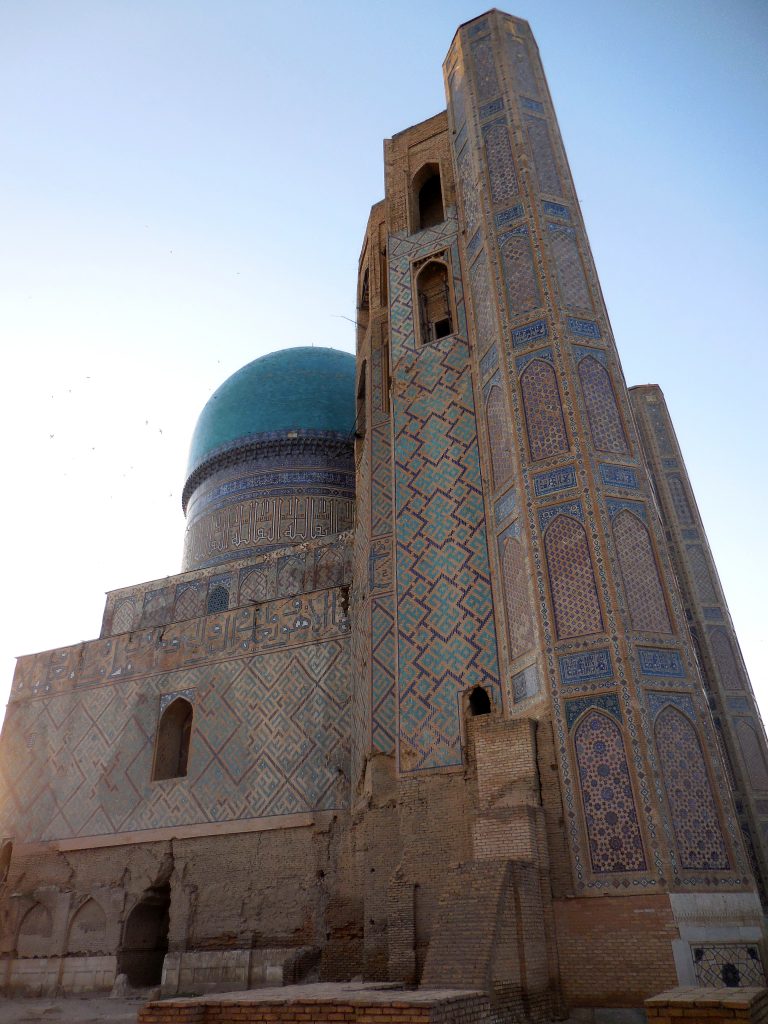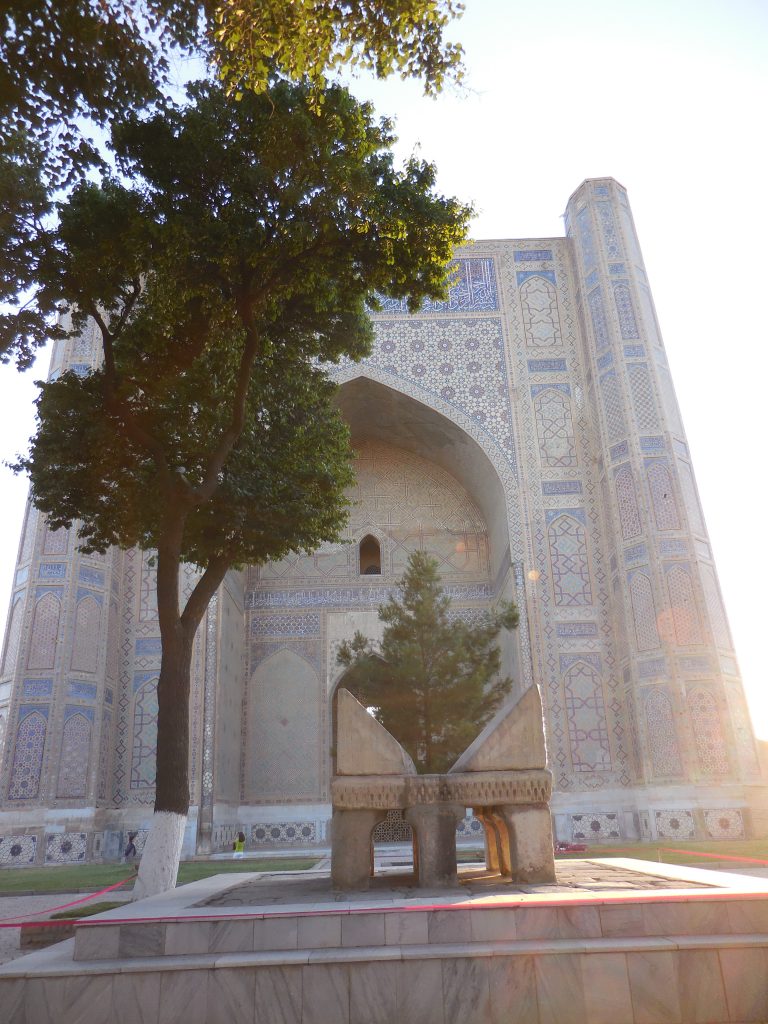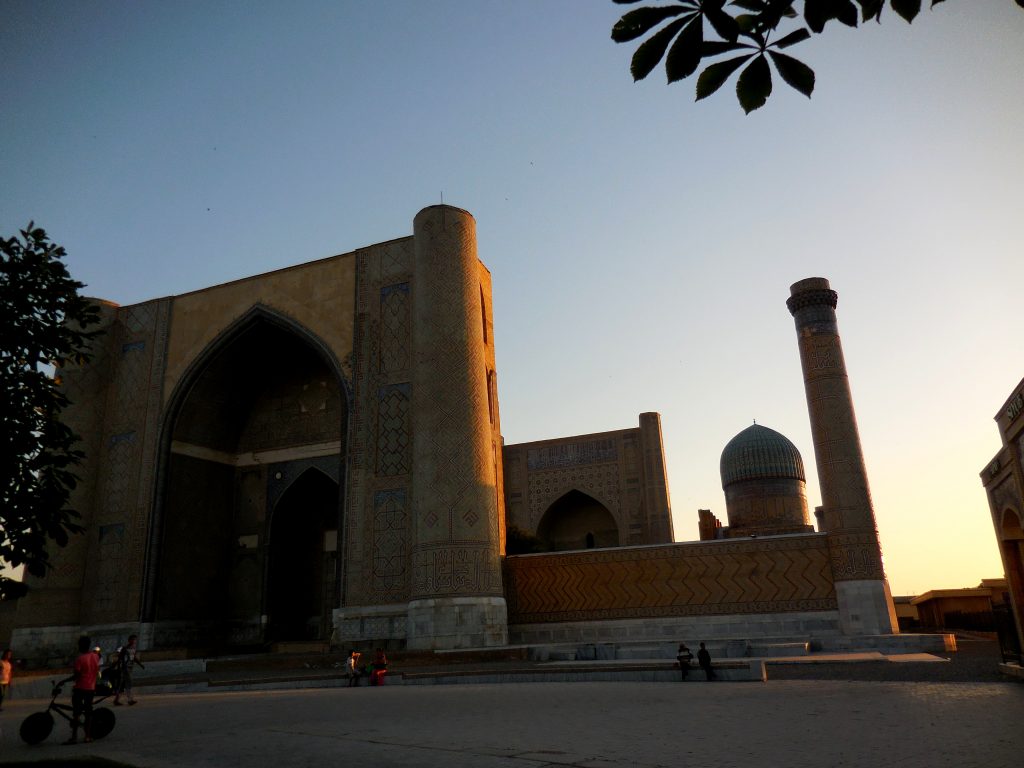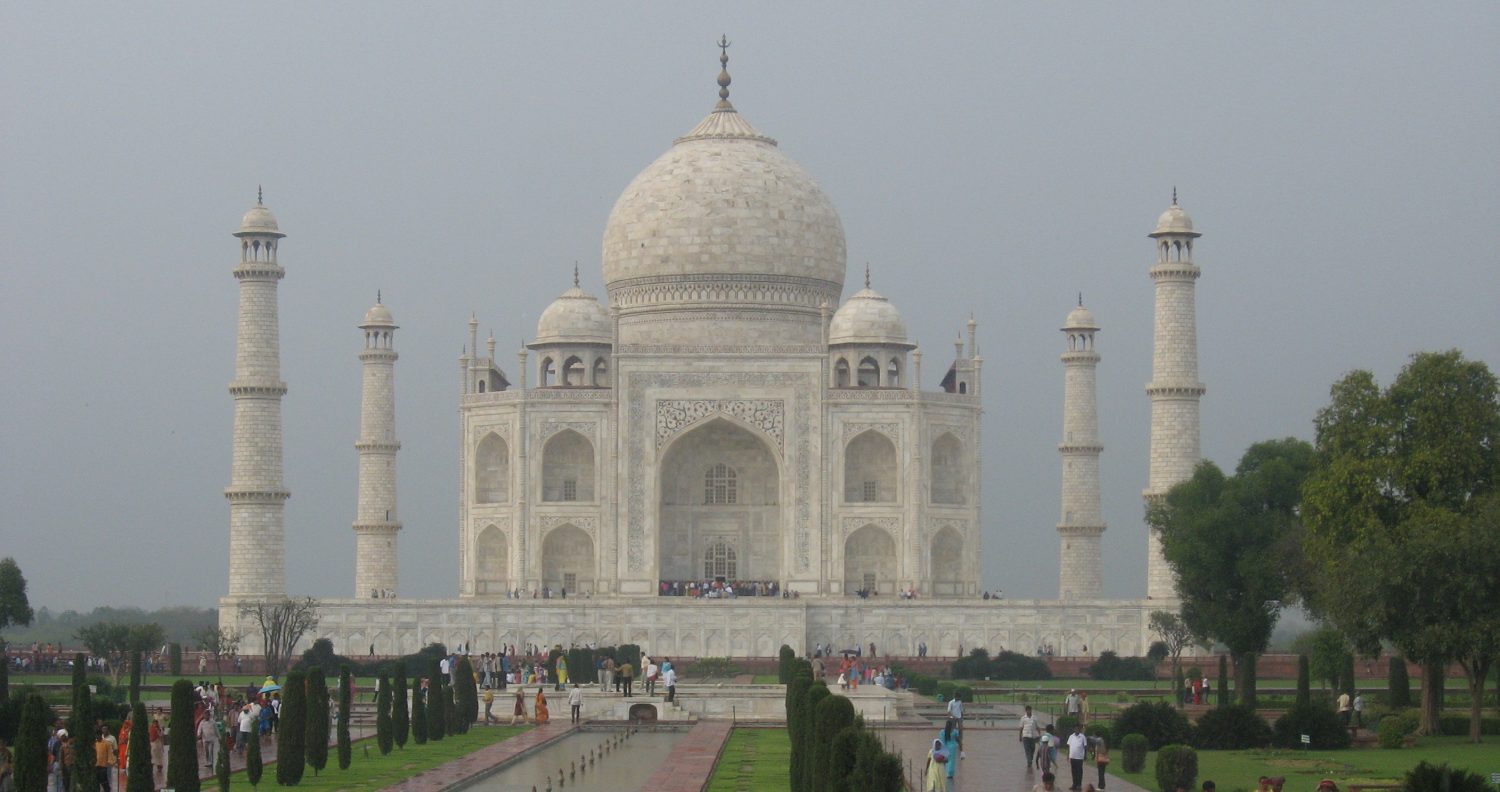Bibi-Khanym Mosque and legend, Samarkand, Uzbekistan
Bibi-Khanym Mosque and legend, Samarkand, Uzbekistan

Continuing uphill the visit, after Registan Square, you will find a very well-kept pedestrian street that leads to other historic buildings. Among them there is the Bibi-Khanym Mosque, the most impressive of all Central Asia. According to the excavations, the base’s dimensions were originally 100 x 140 meters; as a comparison, the base of the Khasan Mosque in Cairo, built in the same period of the 15th century, measures 60 x 120 meters.
According to legend, the construction of the Mosque was ordered by the first wife of Tamerlane, while her husband was at war in the Indies; hence the name Bibi-Khanym (“the oldest wife”). The best architects, artists and artisans were called to provide their knowledge and experience, in order to build the most grandiose religious complex of the time. The works were held between 1399 and 1404 and the Mosque, primarily called Juma, attracted thousands of faithful prayers from all over the region.
Today the portal, the inner courtyard, the small chapels and the minaret have been well preserved; in fact, the building suffered considerable damage due to a strong earthquake in 1897. A large marble paved courtyard offered covered galleries to pilgrims as shelter. The gigantic, ogive-shaped entrance ended at the sides with two 50-meter minarets. A whole surface has intricate mosaics and majolica covered with geometric patterns and sacred aphorisms. The interiors feature azulejos ends covered with majolica and golden decorations.
The legend of the Quran of Osman

The entire building was restored in 2003 and offers visitors a rarefied atmosphere in which to gather surrounded by the majestic walls in an almost mystical silence. At the center of the courtyard is the stone lectern where once stood the oldest Koran in the world, bound in gold and weighing around 300 kilos. The sacred book belonged to Osman, son-in-law of Muhammad, who was killed while reading from his pages. His blood, which felt on the Koran, trasformed it in an even more precious relic.
Brought to Samarkand by a saint, the ancient copy of the Koran remained for a long time on this lectern, provoking the adoration of the locals. It was said that if a woman was searching a male child, it was enough for her to turn around the stone altar three times where the Koran was kept to get pregnant. With the invasion of the Russians, the sacred book was brought to St. Petersburg as a war booty, where it remained until 1924. The Soviets returned it to the Uzbek people who still guards it in the Mui Mubarack Museum in Tashkent.
The legend about the construction
As mentioned, according to legend, the first wife of Tamerlane, Sarai Mulk Khanym, wanted to surprise her husband, when he would be back from the war, with the construction of the Mosque. Called the best experts, she ordered the beginning of the work that proceeded briskly, even for her frequent visits to the site.
Everything proceeded according to plan, until one of the responsible architects blackmailed the Queen, reporting that he would complete the work in time only if he could kiss her. Khanym tried to object: “Can I give you all the maids you want, why me? Look at these colored eggs: they are all different, but once the contents are broken, does it change? So we are women.” The architect, who was young and handsome, replied: “Look at these two glasses: externally they are the same, but I fill one with water and the other with wine. And now that I touch them with my lips, the first will be tasteless, while the second will burn me. This is love.”
Tamerlane was about to return and the work was not finished, therefore the reticent Queen consented to the kiss, but at the last moment she protected her cheek with her hand. It is said that the kiss was given with such passion, that the ardor passed through the arm and left a scarlet birthmark on Khanym’s cheek.
Upon arrival, Tamerlane was speechless before the beauty of the Mosque, but when he saw his wife’s face and knew what had happened, he ordered her to leave the palace with her belongings. In response the Queen commanded her slaves to take the King with her, since it was “her most precious good”. Tamerlane forgave her, but from that day on he arranged for all the women to wear the veil to hide their beauty.

For information on Mausoleum Gur Emir, click here.
Address of the site.
Foto By Eva Zalesakova
Sources: A.V. Samarkand, the city and the legends, Davr Nashriyoti, Tashkent, 2014
Tiziano Terazni, Buona notte, Signor Lenin, TEA, 1992, p. 227

Pingback: Registan Square with its Madras and legend. Samarkand, Uzbekistan | Central Asia
Pingback: The architectural complex Shah-i-Zindah in Samarkand. Uzbekistan | Erica Leoni
Pingback: Registan Square with its Madras and legend. Samarkand, Uzbekistan | Erica Leoni